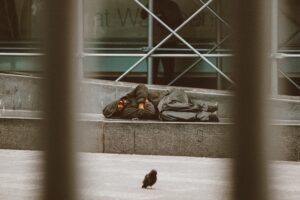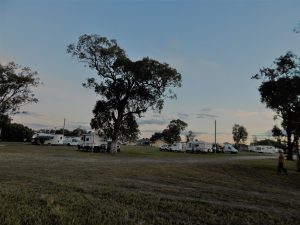
One of our readers commented that on the same day the media were banging on about the Federal Government’s $368 billion submarine plan, a lone SBS panel programme focused on the national housing crisis.
It is tempting to compare spending on affordable housing with the capital cost of up to five nuclear-powered submarines. The Federal Government’s (annual) commitment to affordable housing (currently $1.6 billion), equates to about 13% of its annual submarine budget (ie if the $368 billion is spread equally over 30 years). This assumes that successive governments will continue to spend that much on affordable housing (and submarines).
While housing is the responsibility of individual States and Territories, the Federal Government develops national policy and funds it with grants to the States and Territories.
That’s the theory, but in reality the critical shortage of housing, the cost of housing and the rising tally of homelessness is a clear and present danger to Australia’s social stability. Just this week the 2021 Census data on homelessness was released – what kept them, you might ask?
More than 122,000 people in Australia experienced homelessness on Census night, an increase of 5.2% from 2016, according to the Australian Bureau of Statistics (ABS).
The ABS interpreted the numbers as representing 48 people for every 10,000 people, compared with 50 people for every 10,000 in 2016.
While that is a reduction, the historical snapshot would seem to be an unreliable statistic, given that measures to reduce the spread of COVID-19 throughout 2021 contributed to some of the changes in the data.
“During the 2021 Census, we saw fewer people ‘sleeping rough’ in improvised dwellings, tents or sleeping out, and fewer people in living in ‘severely’ crowded dwellings and staying temporarily with other households,” ABS spokesperson Georgia Chapman said.
The affordable housing issue is not just about people sleeping in doorways. A new report produced by the Queensland Council of Social Services (QCOSS) clearly shows that working families are among those falling prey to the acute rental housing market shortage. It’s worse in some States than in others.
The report from QCOSS and The Town of Nowhere campaign is sobering reading. It predicts more than 220,000 households in the State will not have affordable housing within 20 years.
The report was prepared by national housing expert, University of New South Wales Professor Hal Pawson, and UNSW colleagues.
The tough conclusions include that there are around 150,000 households across Queensland with unmet housing needs. This includes 100,000 households who would typically be eligible for social housing. These households are either experiencing homelessness, or are low-income households in private rentals, paying more than 30% of household income in rent.
The figure is more than twice the official indicator of 47,306 households on the Queensland social housing waiting list. The latter has grown by 70% over the past three years.
Un-met housing needs are highest in satellite cities south of Brisbane. Pawson’s study shows that 10% of all households in Logan, Beaudesert and Gold Coast are homeless or living in unaffordable housing.
Professor Pawson said Queensland would need 11,000 affordable and social homes each year for the next 20 years, about 2,700 of which would need to be social housing.
He told the ABC the government had promised to build 13,000 social and affordable homes by 2027. But the QCOSS report found that the number of people with “very high need” for social housing was 37% higher than the system could accommodate.
In the decade leading up to 2017, there was “minimal” investment by State and Federal governments in affordable and social housing, Professor Pawson said.
“Unless they can get a grip on the situation, it’s a problem that over the next generation will continue to become more stressed and more pressurised.”
Much of the blame for the current problem is laid at the feet of private landlords. Private rentals in Queensland have risen as much as 33% since 2020. The sharpest increases, however, have been in regional markets. For example, over the past five years median rents rose by 80% per cent in the industrial town of Gladstone, by 51% in the tourist town of Noosa and 33% in the Gold Coast area. Nearly 60% of low-income households in the private rental market are facing unaffordable housing costs, with 15% in extreme housing affordability stress (rent accounting for more than half of total income).
While rentals have risen steeply, the bigger problem is a lack of rental accommodation. Rental vacancies are close to zero not only in Brisbane and the Gold Coast but also in regional towns.
The report states: “Queensland’s private rental housing has seen several years of declining vacancy levels and rent inflation rates far above the national norm. More generally, the sector remains entirely dominated by small-scale investor landlords whose usual prioritisation of capital growth over rental revenue inherently compromises tenant security.”
The upshot of this is that landlords are selling on the rising market, resulting in fewer houses for rental. Coupled with this is the inadequacy of tenant rights on rents, security and conditions. The Queensland Government enacted significant rental regulation reforms in 2022, but these fell far short of the changes advocated by tenants’ rights campaigners.
The Productivity Commission reported last year on the National Housing and Homelessness Agreement framed by the Albanese Government.
The agreement provides $1.6 billion a year in federal funding to the States and Territories, with the aim of improving access to affordable and secure housing.
However, the Commission judged the programme ineffective and in need of a major shake-up. With rents rising and vacancies falling, low-income private renters are spending more on housing than they used to. One in four households have less than $36 a day left for other essentials, the Commission said.
For those who might argue against more investment in social housing, there are success stories. The Queensland Government has funded a small number of permanent supportive housing (PSH) tenancies for people who have experienced long-term homelessness. PSH combines subsidised long-term housing with access to intensive but voluntary support services. One PSH programme, Brisbane Common Ground (BCG), established in 2012, is a 146-unit apartment block with 24/7 on-site support. Studies reported high tenancy sustainment rates and tenant satisfaction levels. It also produced significant savings via reduced use of emergency services and crisis accommodation. (QCOSS Report).
Despite the success of projects like BCG, there are many examples of State governments backing away from the commitment to social housing. For example, the New South Wales government is reportedly preparing to sell its Waterloo social housing complex in Sydney. The ABC reported that Waterloo Estate, the biggest social housing estate in Australia, houses almost 2,500 people.
The 18ha site will be redeveloped under a NSW government strategy called Communities Plus, where public land is offered to developers on the proviso 30% of what they build is dedicated social housing. This is clearly a retrograde move away from a project that is 100% dedicated to social housing. Meanwhile, more than 51,000 hard-pressed households are waiting for a home in NSW.
In an even more backward step, Darwin’s local Council has reportedly been issuing $162 fines to ‘rough sleepers’. The latter may or may not be indigenous people known as ‘longgrassers.’ (see link below)
Darwin Council issued a statement saying it had been subject to significant pressure from some current Northern Territory government MLAs. The MPs wanted to increase the number of infringements (and the size of fines), issued to vulnerable people who are sleeping rough in public places. (And what happens when these people cannot pay the fines? Imprisonment for non-payment? I guess that’s one way of getting people off the streets..Ed)
In its defence Council said council rangers issued fines as a “last resort”.
“We do not consider the fining of vulnerable people the solution to complex issues such as homelessness.”
More reading
https://www.drbilldayanthropologist.com/resources/Longgrass%20people%20of%20Darwin%202012.pdf

